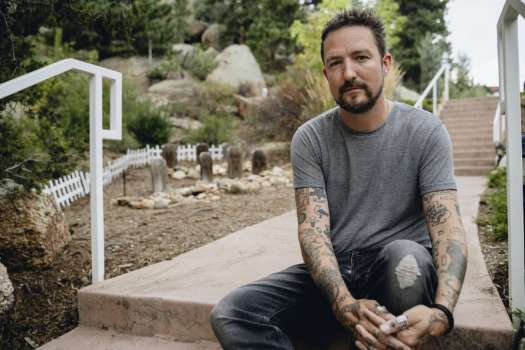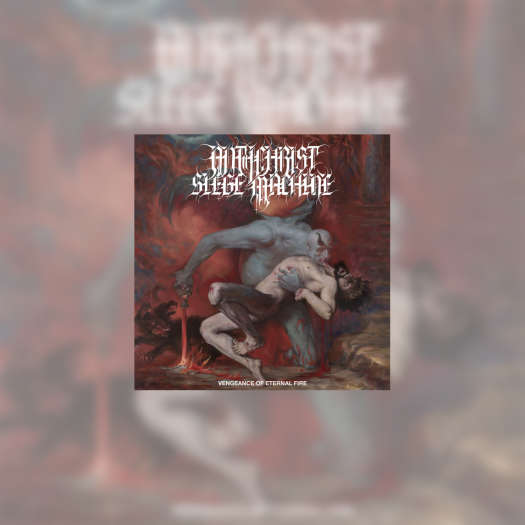Sara Colangelo's feature directorial debut, Little Accidents, attempts to be many things.
Initially, it's a treatise on blame. In a small community where everyone is still grieving over a coal mining accident that left several dead, everyone is looking to point fingers at a responsible party. The sole survivor, Amos (Boyd Holbrook), a man left crippled from the accident, is at the centre of this controversy, having an important testimony to make about what actually happened. But after this setup, wherein townsfolk are seen trying to persuade Amos into blaming middle-management to ensure they receive a hefty financial settlement, Little Accidents shifts gears.
The family car of Bill Doyle (Josh Lucas) — the aforementioned middle management — is vandalized. Shortly thereafter, his son dies accidentally in front of Owen Briggs (Jacob Lofland), a poor, bullied boy with a mostly absent mother (Chloe Sevigny) who lost his father in the accident. Weirdly, the film then becomes about Diane Doyle (Elizabeth Banks), as she goes on a self-destructive bender while wondering what might have become of her missing son.
Once these storylines are set up, Colangelo shifts gears thematically and structurally to move from blame, grief and rage to a complex — and eventually reiterative — tapestry of guilt. Diane strikes up an affair with Amos, and Owen goes out of his way to strike up a friendship with Diane. Both parties are simply using those they've inadvertently hurt to deal with their own guilt, which is ultimately what Little Accidents boils down to for most of its running time, until it shifts thematic gears yet again in the final arc to make a comment on how easily manipulated the "truth" really is.
Because there are several storylines and incidentals flying around the periphery of this humble middle-American character piece, there's never any sense of an emotional centre. We understand what's motivating Diane, Owen and Amos, but since each character is little more than their actions, it's difficult to find a way in. Still, actors Banks, Holbrook and even Lofland are all obviously quite invested in their respective roles and manage to compensate for a story that often verges on trite in an effort to conveniently align each story to a greater symbolic whole.
Colangelo's naturalistic style does work for the proposed story — it's like Debra Granik without the tension and ire — but the story itself isn't fully formed. There's a good basic premise here for human exploration, but what Colangelo needed to do was understand these characters better and give the actors more to work with beyond sheer actions that service the plot. If this were an exercise in exposition and sheer storytelling, the functionality of her setup would work, but her style, and the looseness of the aesthetic, suggests she's going for more of an arthouse presentation.
Unfortunately, no supplements are included with the DVD, which is standard for a film that had no theatrical run in Canada.
(Mongrel Media)Initially, it's a treatise on blame. In a small community where everyone is still grieving over a coal mining accident that left several dead, everyone is looking to point fingers at a responsible party. The sole survivor, Amos (Boyd Holbrook), a man left crippled from the accident, is at the centre of this controversy, having an important testimony to make about what actually happened. But after this setup, wherein townsfolk are seen trying to persuade Amos into blaming middle-management to ensure they receive a hefty financial settlement, Little Accidents shifts gears.
The family car of Bill Doyle (Josh Lucas) — the aforementioned middle management — is vandalized. Shortly thereafter, his son dies accidentally in front of Owen Briggs (Jacob Lofland), a poor, bullied boy with a mostly absent mother (Chloe Sevigny) who lost his father in the accident. Weirdly, the film then becomes about Diane Doyle (Elizabeth Banks), as she goes on a self-destructive bender while wondering what might have become of her missing son.
Once these storylines are set up, Colangelo shifts gears thematically and structurally to move from blame, grief and rage to a complex — and eventually reiterative — tapestry of guilt. Diane strikes up an affair with Amos, and Owen goes out of his way to strike up a friendship with Diane. Both parties are simply using those they've inadvertently hurt to deal with their own guilt, which is ultimately what Little Accidents boils down to for most of its running time, until it shifts thematic gears yet again in the final arc to make a comment on how easily manipulated the "truth" really is.
Because there are several storylines and incidentals flying around the periphery of this humble middle-American character piece, there's never any sense of an emotional centre. We understand what's motivating Diane, Owen and Amos, but since each character is little more than their actions, it's difficult to find a way in. Still, actors Banks, Holbrook and even Lofland are all obviously quite invested in their respective roles and manage to compensate for a story that often verges on trite in an effort to conveniently align each story to a greater symbolic whole.
Colangelo's naturalistic style does work for the proposed story — it's like Debra Granik without the tension and ire — but the story itself isn't fully formed. There's a good basic premise here for human exploration, but what Colangelo needed to do was understand these characters better and give the actors more to work with beyond sheer actions that service the plot. If this were an exercise in exposition and sheer storytelling, the functionality of her setup would work, but her style, and the looseness of the aesthetic, suggests she's going for more of an arthouse presentation.
Unfortunately, no supplements are included with the DVD, which is standard for a film that had no theatrical run in Canada.




